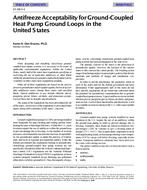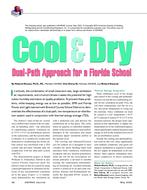Because of the close proximity of large numbers of passengers in commercial aircraft, it is difficult to limit the person-to-person transport ofbio-effluents, including pathogens. Many aircraft are equipped with personal air outlets (PAOs), commonly referred to as gaspers. A series ofexperiments was conducted to determine if PAOs have the capability of reducing close range person to person exposure to airborne exhaled bioeffluents.The experiments were conducted in an eleven-row, wide body, aircraft cabin mockup which uses actual aircraft components for airdistribution in the cabin. Tracer gas was used to simulate exhaled bio-effluents with release and measurements conducted in the breathing zoneusing thermal manikins to simulate passengers. The close range airborne transport mechanism is by contaminant plume that follows the cabin airmotion. The location of the recipient within the plume, to a large extent, determines the amount of exposure and the impact of PAO operation.Use of PAOs is not expected to reduce average contaminant levels in the cabin unless they increase supply air to the cabin. For these experiments,total supply air to the cabin, including the PAO airflow, was held constant regardless of PAO use. The PAOs do impact local exposure bydisrupting the contaminant plume. In some cases, up to 90% reduction in close-range person-to-person exposure was observed while in other casesthere was negligible or even negative impact. Even though substantial impact was seen in some cases, no universal guidelines could be identified foruse of PAOs due to the unpredictable behavior of the plumes and variations in their behavior from location to location. In most cases, it wasfound that use of a POA by the source person was more effective than use by the exposed person as the PAO jet tended to push the contaminantplume from the source person down and out of the breathing zone.
Citation: ASHRAE Conference Papers, Denver, CO
Product Details
- Published:
- 2013
- Number of Pages:
- 8
- File Size:
- 1 file , 330 KB
- Product Code(s):
- D-DE-13-C054


